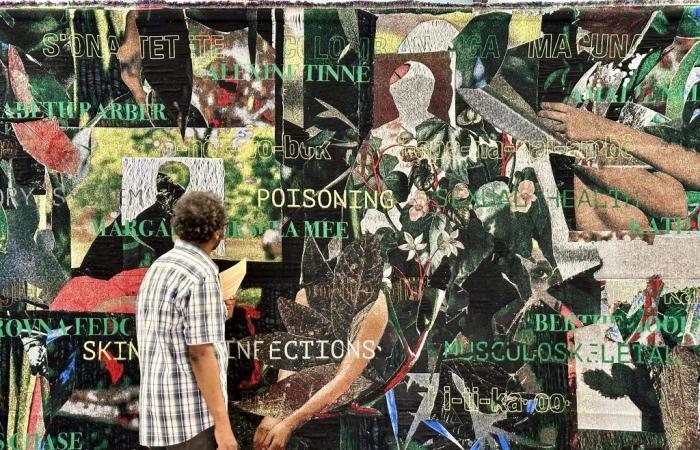The extinct endingstaff of Lucia Veronese and edited by Paolo Mele e Claudio Zecchilarepresents the winning project of the XII edition of the Italian Council, a program for the promotion of Italian contemporary art in the world, created by the Ministry of Culture. Thanks to this project, the work The extinct endingfrom which the exhibition takes its name, will become part of the collection of the Ca’ Pesaro Gallery in Venice.
The extinct ending is a complex project, born from research phases carried out between London, Trondheim and Zurich. This geographical division of work is also reflected at a formal level, since the final work is the result of an overlapping of multiple levels. The first of these has its origins in the University of Zurich, where some «researchers and cultural partners of the project conducted research on the relationship between the extinction of indigenous languages in three macro-areas of the world, between North America and the North-West of the Amazon, and the consequent loss of medicinal knowledge of plants».
According to recent studies, by the end of the century we will lose 30% of indigenous languages, and consequently also that part of visual culture connected to them. “The extinction of languages would constitute a great loss for the humanitarian heritage, with consequences for our pharmacopoeia”, he continues Lucia Veronese.
This last aspect was crucial for the artist’s research, focused on the study and identification of the plants and languages of the North-West Amazon. The second relevant aspect in the artistic analysis reflects the parallelism «between the oblivion of these plants and the similar oblivion into which many botanicals sank from the 18th to the 20th century» which, due to their genre, did not receive adequate attention. recognition of their discoveries. «The idea – he tells us Lucia – was to bring back to life the name of these women and the importance they had.”
Finally, the third level was born from the comparison with Hannah Ryggen, a Norwegian artist of the 1900s, who wove enormous tapestries by hand on a vertical loom. «Hannah Ryggen she was also a political activist, a communist, and she conceived her work as a tool of communication”. Her tapestries denounced the atrocities perpetrated during the Second World War and in the post-war period. “I allowed myself – she concludes Lucia Veronese – to conceive this tapestry as a great manifesto, a warning of what we risk losing by the end of our century.”
In conclusion, the exhibition The extinct ending Of Lucia Veronesiat the Galleria Ca’ Pesaro, offers visitors a unique opportunity to immerse themselves in an artistic project of great complexity and depth. Divided into two distinct spaces, it allows you to explore both the portego of the palace, where the work is exhibited The extinct endingboth the exhibition space opposite the museum’s entrance courtyard, dedicated to the various stages of artistic research. This dual articulation not only enhances the final work, but also the meticulous investigation process that generated it, offering a complete vision of the work of the Veronese and the cultural and social significance of his research.






